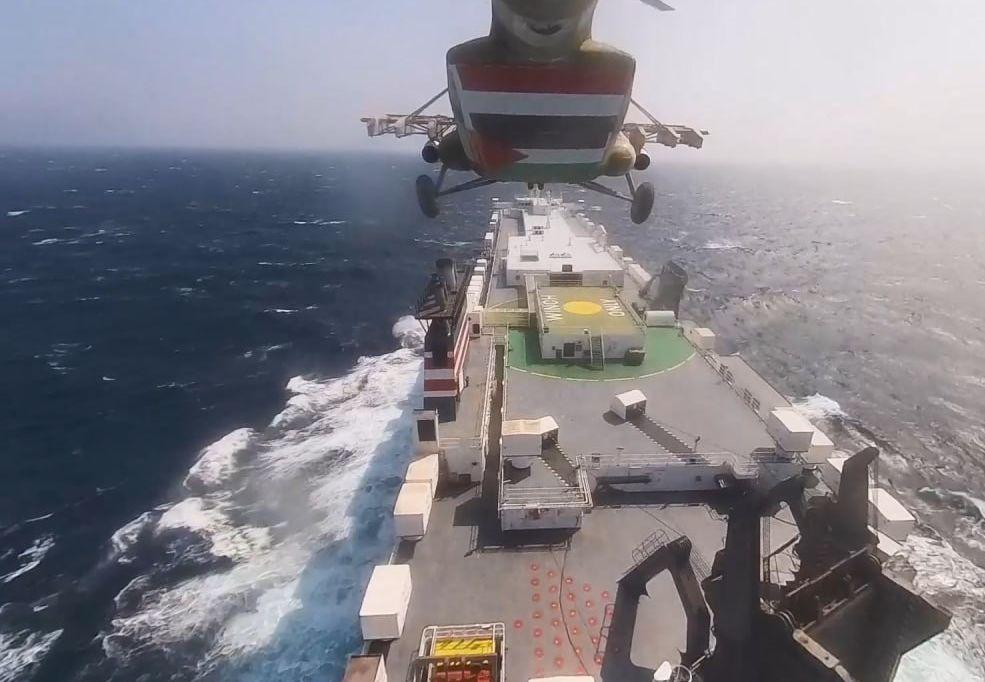
Houthi forces based in Yemen are engaged in what resembles an unhinged, turbocharged form of piracy in the Red Sea and Gulf of Aden, where disruption and destruction have supplanted the traditional motivation of material gain. With an Iranian helping hand, the Houthis have deployed an armoury of drones, cruise missiles and ballistic missiles to attack international merchant shipping and US naval vessels across a wide area, on one occasion hijacking a vehicle carrier (impervious to normal boarding attempts because of their high freeboard) by pirates landed by helicopter.
While the Houthis’ capabilities and tactics are shocking in their sophistication and audacity, the dire implications for the prevailing security order of such rampant predations against merchant shipping would be recognisable even to the Romans.
The Houthi phenomenon presents a different sort of threat than previous land-based conflicts in Iraq, Syria or Afghanistan, or piracy off the coast of Somalia. Shutting down a major waterway like the Red Sea to inter-regional maritime trade carries bigger potential knock-on effects. It not only threatens prosperity (whence ‘Operation Prosperity Guardian’) but also indicates a fractured global order on the slide towards something more anarchic and dangerous than first impressions suggest.
As my colleague Malcolm Davis has highlighted, maritime security is global in nature. It is therefore appropriate for the response to be multinational in scope and trading nations to shoulder the burden of contributing assets to the maritime coalition currently being assembled under US leadership.
Australia’s decision not to commit a warship in support of Prosperity Guardian is disappointing, notwithstanding counterarguments that it is justified by the tighter geographical focus on Australia’s immediate region stipulated in the 2023 defence strategic review. The request to do so from the US, through the alliance, was reasonable and limited. Unlike some previous US military interventions in the Middle East, Prosperity Guardian is clearly defensive and directly relevant to the interests of trading nations like Australia that depend on the health of a global trading system, not only for prosperity but also for seaborne supply.
In an AUKUS context, Canberra needs to be careful about denying a request to send a ship to help out an overstretched US Navy at the same time as Australia is asking the US Navy to transfer submarines out of its order of battle as soon as possible. That’s not an equitable look, from an alliance viewpoint, even when Canberra’s intention is to focus the Australian Defence Force’s limited resources on regional commitments.
Unfortunately for the US, Australia’s reluctance to commit a significant asset to Prosperity Guardian mirrors ambivalence elsewhere in the region, including the two US Asian allies with the biggest navies and vested interests in maritime trade, Japan and South Korea. India’s absence from the US-led coalition, while less surprising, is also a disappointment considering India’s relative proximity and naval heft.
From a more operational and instrumental point of view, participating in Prosperity Guardian presents a significant opportunity for the Royal Australian Navy to hone its skills in air warfare, missile defence, escort and multinational coalition operations—all key areas in which Australia’s naval personnel stand to benefit from rare operational experience in a real-world contingency. That outweighs the opportunity cost of taking a warship out of its training and exercise cycle.
Only the Hobart-class air warfare destroyers possess the appropriate mix of capabilities to meet the multidimensional Houthi challenge in the Red Sea. The experience that the crew would bring back would be relevant to future contingencies in the Indo-Pacific strategic environment and stress-test the ship’s performance across the board in ways that scripted exercises simply cannot.
While the case for discipline under the DSR is a strong one and its focus on the Indo-Pacific is strategically correct, there’s an element of strategic parochialism creeping back into Australia’s defence debate, under the guise of the DSR’s foreshortened, regional horizons.
There will be occasions when Canberra will need to decline out-of-area requests from Washington. Yet it’s worth noting that Australia currently has an E-7A Wedgetail deployed to Germany to support supply efforts into Ukraine. Last year, an Australian P-8A Poseidon aircraft was deployed in conjunction with NATO operations in the Mediterranean. These deployments didn’t generate controversy. Nor were they seen as a distraction from the ADF’s transition towards a focused force.
Moreover, the Red Sea isn’t appreciably more distant from Australia than Northeast Asia, which although classified by Canberra as part of the Indo-Pacific isn’t identified in the DSR as part of Australia’s immediate region. The argument that Australia needs to husband its finite military resources to focus exclusively on the immediate region is a false one.
As an island nation reliant on seaborne supply, Australia needs to prioritise its surface fleet, not only its submarine arm. Both aspects of naval capability are essential and interdependent. Nor are their respective operational ambits limited only to Australia’s immediate region. From this perspective, participating in the Red Sea coalition operation is in Australia’s direct strategic interests. Alliance politics and the opportunity to gain operational experience are important but secondary considerations.